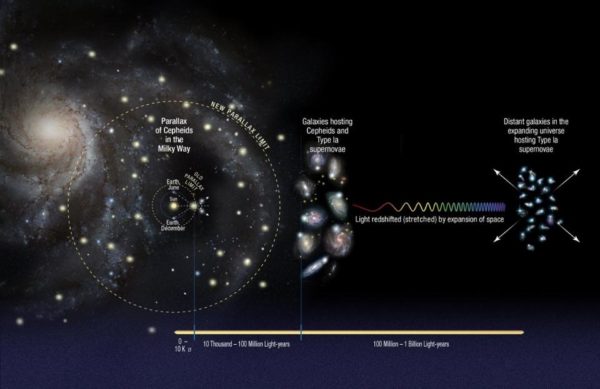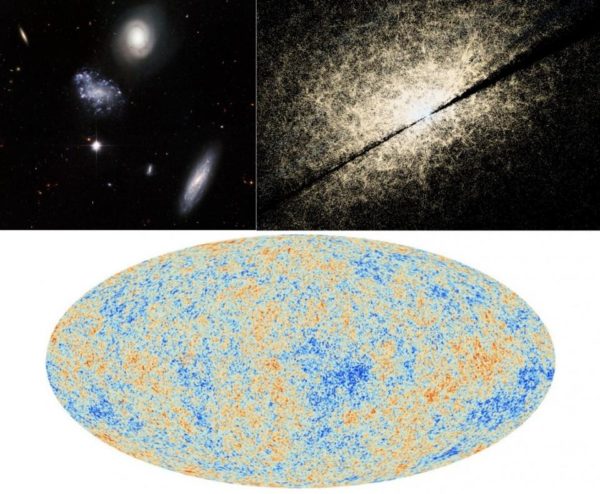“No matter what technique you use, you should get the same value for the expansion rate of the universe today.” -Ben Hoscheit
When you think of the Universe on the largest scales, you likely think of galaxies grouped and clustered together in huge, massive collections, separated by enormous cosmic voids. But there’s another kind of cluster-and-void out there: a very large volume of space that has its own galaxies, clusters and voids, but is simply higher or lower in density than average.
 The construction of the cosmic distance ladder involves going from our Solar System to the stars to nearby galaxies to distant ones. Each “step” carries along its own uncertainties; it also would be biased towards higher or lower values if we lived in an underdense or overdense region. Image credit: NASA,ESA, A. Feild (STScI), and A. Riess (STScI/JHU).
The construction of the cosmic distance ladder involves going from our Solar System to the stars to nearby galaxies to distant ones. Each “step” carries along its own uncertainties; it also would be biased towards higher or lower values if we lived in an underdense or overdense region. Image credit: NASA,ESA, A. Feild (STScI), and A. Riess (STScI/JHU).
If our galaxy resided near the center of one such region, we’d measure the expansion rate of the Universe to be higher-or-lower than average when we used nearby techniques. But if we measured the global expansion rate, such as via baryon acoustic oscillations or the fluctuations in the cosmic microwave background, we’d actually arrive at the true, average rate.


Is it possible to measure the Hubble constant using supernovae or a Cepheid variables from galaxies outside the KBC void? I take it that the HST’s various methods of measuring the constant have had to rely on supernovas/Cepheids from less than a billion light years away, placing them inside the KBC void and thus subject to extra gravitational pull from matter at the edges of our void. What’s the distance record for a supernova/Cepheid observation to establish the Hubble constant? I take it such measurements might be more in line with the Hubble constant we measure from the CMB.
The difference in expansion at at different distances is one of the ways the look at what dark energy is doing. So if we naively took a close in expansion rate that is off, we would get the rate of change of the expansion rate wrong. What does this new knowledge do to our understanding of how the expansion rate changes over time?
Is "average" density defined via random sampling of galaxies (observers) or random sampling of points in the universe? Since more galaxies, by definition, appear in more crowded parts of the universe, sampling by selecting a galaxy will give a much greater average density than sampling by selecting a random point of the universe. Which kind of average are we less than?
Our solar system is in a relative void too: the outskirts of a spiral galaxy. between arms. Antropic principle maybe selects for voids to support life because of lower radiation levels?